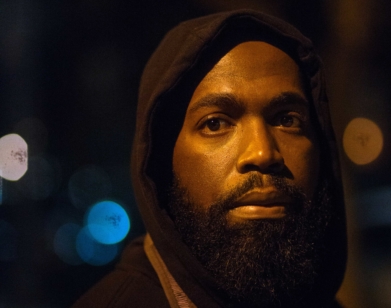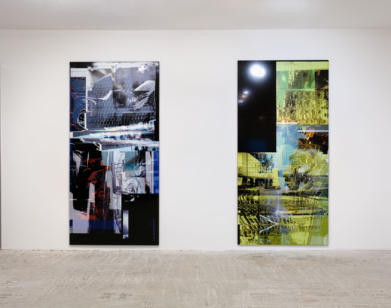Photographer Edmund Clark urges his audience to contemplate the War on Terror
For many, Don McLean’s “American Pie” is merely a song from decades past; for others, it is reminiscent of the 1959 plane crash that killed singer Buddy Holly, a tragedy named “The Day the Music Died” after McLean’s lyric. For British photographer Edmund Clark, it signifies a little more. “It’s a beautiful ballad about America coming to terms with the death of Buddy Holly,” says Clark over the phone. “But then I find out that it’s [one of the songs] played for sleep deprivation and interrogation purposes in military prisons and my relationship to what was my childhood song changes.”
“The Day the Music Died,” Clark’s new exhibit at the International Center of Photography, urges viewers to contemplate the so-called “War on Terror” and the measures that governments take to protect citizens from threats of international terrorism, many of which erode civil liberties; it challenges ideas of state secrecy and security as well as incarceration and accountability (or lack thereof). Opening today through May 6, the show features more than 100 photographs, videos, official documents, ephemera, and installations from Clark’s work over the past 10 years.
It began more or less with Guantanamo Bay. Around the time of 9/11 and the U.S. invasion of Afghanistan, Clark was compiling Still Life: Killing Time, a collection of vanitas–inspired photographs from a prison in Portsmouth. “Suddenly, incarceration was on all our screens in a sort of global geopolitical event,” he recalls. Images that emerged from Guantanamo were often unfocused and of unidentifiable detainees kneeling, bound and gagged, in orange jumpsuits: “Backs of heads, shackled ankles—we didn’t get to see who these people in the images are. That almost unwittingly created a visual narrative about dehumanization; and when it’s associated with the message [that] ‘These are the worst of the worst,’ which is what was [implied by] the opening of Guantanamo, it becomes demonization.”
Clark sought out and photographed homes of British detainees who had been released and faced no legal charges. “I wanted to explore that disconnect between the representation on our screens and the situation of these people after Guantanamo, where there was no charge and there was no guilt—trying to reconcile what we see and what we’re told with who these people are,” says Clark. “Where they eat, sleep, garden; identifying those very ordinary, daily—and in some cases very British spaces—and saying that this is an image about Guantanamo Bay.”
“The Day the Music Died” also presents new works. 198/2000, for instance, is an installation consisting of 198 images that depict the mistreatment of prisoners in U.S. military facilities. Released by the Pentagon in 2016 as a result of a Freedom of Investigation lawsuit filed by the American Civil Liberties Union, the photographs are a minute sliver from a collection of 2,000. Their release warrants the question of what remains—and why. “What is it about these photos? What’s absent? […] In some ways they show something quite positive, they denote some acknowledgment that there’s been a need to document, which may lead to some kind of accountability,” says Clark. “Yet [the images] are themselves an act of partial redaction and of partial denial.”
They are also an anomaly for Clark, whose work often excludes faces and figures. “There are often photographs of [individuals] who will always be identified with images that people assume show terrorists,” he says. “And that’s one of the problems with photography. Often the human form becomes a mirror for people’s preconceptions.”
“EDMUND CLARK: THE DAY THE MUSIC DIED” IS NOW ON VIEW AT THE INTERNATIONAL CENTER OF PHOTOGRAPHY UNTIL MAY 6, 2018.






